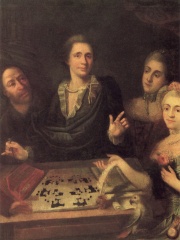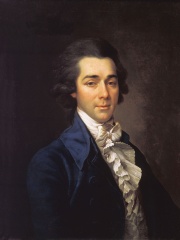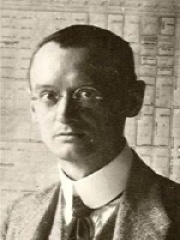
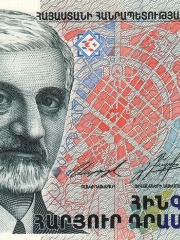
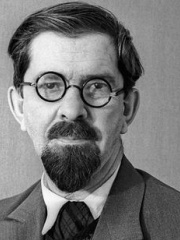
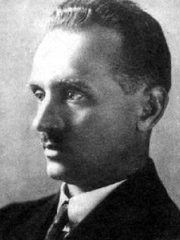
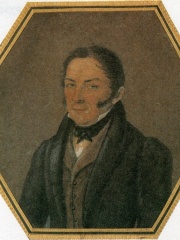
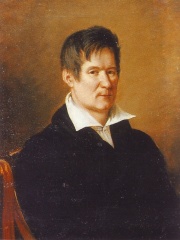
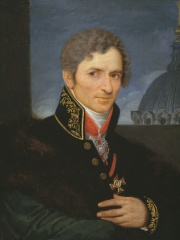
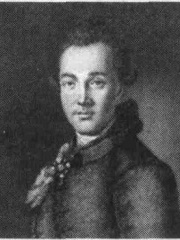
The Most Famous
ARCHITECTS from Russia
This page contains a list of the greatest Russian Architects. The pantheon dataset contains 518 Architects, 18 of which were born in Russia. This makes Russia the birth place of the 8th most number of Architects behind Spain, and Austria.
Top 10
The following people are considered by Pantheon to be the top 10 most legendary Russian Architects of all time. This list of famous Russian Architects is sorted by HPI (Historical Popularity Index), a metric that aggregates information on a biography's online popularity. Visit the rankings page to view the entire list of Russian Architects.

1. Bruno Taut (1880 - 1938)
With an HPI of 70.06, Bruno Taut is the most famous Russian Architect. His biography has been translated into 38 different languages on wikipedia.
Bruno Julius Florian Taut (4 May 1880 – 24 December 1938) was a renowned German architect, urban planner and author. He was active during the Weimar period and is known for his theoretical works as well as his building designs.

2. Alexander Tamanian (1878 - 1936)
With an HPI of 63.19, Alexander Tamanian is the 2nd most famous Russian Architect. His biography has been translated into 29 different languages.
Alexander Hovhannesi Tamanian (Armenian: Ալեքսանդր Հովհաննեսի Թամանյան; Russian: Алекса́ндр Ива́нович Тама́нов, romanized: Aleksándr Ivánovich Tamánov; March 4, 1878 – February 20, 1936) was a Russian-born Armenian neoclassical architect, well known for his work in the city of Yerevan.

3. Lev Rudnev (1885 - 1956)
With an HPI of 62.93, Lev Rudnev is the 3rd most famous Russian Architect. His biography has been translated into 26 different languages.
Lev Vladimirovich Rudnev (Russian: Лев Владимирович Ру́днев; 13 March [O.S. 1 March] 1885 – 19 November 1956) was a Soviet architect, and a leading practitioner of Stalinist architecture.

4. Konstantin Melnikov (1890 - 1974)
With an HPI of 61.82, Konstantin Melnikov is the 4th most famous Russian Architect. His biography has been translated into 25 different languages.
Konstantin Stepanovich Melnikov (Russian: Константин Степанович Мельников; August 3 [O.S. July 22] 1890 – November 28, 1974) was a Russian architect and painter. His architectural work, compressed into a single decade (1923–33), placed Melnikov on the front end of 1920s avant-garde architecture. Although associated with the Constructivists, Melnikov was an independent artist, not bound by the rules of a particular style or artistic group. In the 1930s, Melnikov refused to conform with the rising Stalinist architecture, withdrew from practice and worked as a portraitist and teacher until the end of his life.
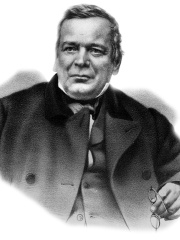
5. Konstantin Thon (1794 - 1881)
With an HPI of 59.93, Konstantin Thon is the 5th most famous Russian Architect. His biography has been translated into 23 different languages.
Konstantin Andreyevich Thon or Ton (Russian: Константи́н Андре́евич Тон; October 26, 1794 – January 25, 1881) was a Russian architect who was one of the most notable architects during the reign Nicholas I. His major works include the Cathedral of Christ the Saviour, the Grand Kremlin Palace and the Kremlin Armoury in Moscow.

6. Joseph Bové (1784 - 1834)
With an HPI of 58.71, Joseph Bové is the 6th most famous Russian Architect. His biography has been translated into 20 different languages.
Joseph Bové, also Joseph Jean-Baptiste Charles de Beauvais or Osip Ivanovich Bove (Russian: Осип Иванович Бове; 4 November [O.S. 24 October] 1784 — 28 June [O.S. 16 June] 1834), was an Italian-Russian neoclassical architect who supervised the reconstruction of Moscow after the Fire of 1812.

7. Vasily Stasov (1769 - 1848)
With an HPI of 56.72, Vasily Stasov is the 7th most famous Russian Architect. His biography has been translated into 22 different languages.
Duke Vasily Petrovich Stasov (Russian: Васи́лий Петро́вич Ста́сов; 4 August 1769 – 5 September 1848) was a famous Russian architect, born into a wealthy noble family: his father, Pyotr Fyodorovich Stasov, came from one of the oldest aristocratic families founded in 1387 by the 1st Duke Stasov Dmitri Vasilevich and his mother, Anna Antipyevna, came from the prominent Priklonsky family

8. Andrey Voronikhin (1759 - 1814)
With an HPI of 56.00, Andrey Voronikhin is the 8th most famous Russian Architect. His biography has been translated into 21 different languages.
Andrey (Andrei) Nikiforovich Voronikhin (Russian: Андрей Никифорович Воронихин; 28 October 1759, Novoe Usolye, Perm Oblast – 21 February 1814, Saint Petersburg) was a Russian architect and painter. As a representative of classicism he was also one of the founders of the monumental Russian Empire style. Born a serf of the Stroganov family, he is best known for his work on Kazan Cathedral in Saint Petersburg. Andrey Voronikhin was born in the village of Novoa Usolye (now Perm Krai) to a family who were the serfs of count Alexander Sergeyevich Stroganov, a longtime President of the Imperial Academy of Arts. It is generally believed that he was fathered by Alexander Stroganov. Voronikhin trained in painting in the workshop of Ural icon painter Gabriel Yushkov. The talents of his youth attracted Stroganov's attention, and in 1777 the count sent Voronikhin to study in Moscow. Among his teachers were Vasili Ivanovich Bazhenov and Matvey Fyodorovich Kazakov. After 1779 Voronikhin worked in Saint Petersburg. In 1785, Voronikhin was liberated. From 1786 through 1790 he studied architecture, mechanics and mathematics in France and Switzerland. In 1797, the artist obtained the academic title of «перспективной живописи» from the Academy of Fine Arts for the pictures «Вид картинной галереи в Строгановском дворце» (1793, Hermitage) and «Вид Строгановской дачи» (1797, Russian museum, Saint Petersburg). From the beginning of the 19th century he taught at the Academy of Fine Arts. The earliest architecture of Voronikhin includes finishing the interiors of Stroganov Palace (1793). The magnificent baroque forms, proposed by Rastrelli, were replaced by Voronikhin with a strict classical order, characterized by simplicity and refinement. Furthermore, he reconstructed the interiors of the Stroganov Dacha on the Black River (1795 - 1796), and also built estates in Gorodnya (1798). The main creation of Voronikhin was Kazan Cathedral in Saint Petersburg. The construction began on 27 March 1801, and work was finished in 1811. On the occasion of renovating the temple, Voronikhin was granted a pension and the order of St. Anna of the second degree. A number of other works of Voronikhin were the house of the Department of the Treasury, the building of the Saint Petersburg Mining Institute, the colonnade of the Peterhof, and palaces in Strelna, Gatchina and Pavlovsk. The architect died on 5 March 1814 in Saint Petersburg. Voronikhin's nephew, Nikolay Ilyich Voronikhin, was an architect based in Ryazan. He inherited Andrey Voronikhin's archive; Ascension Cathedral in Kasimov (photo) by Nikolay Voronikhin is remotely based on Andrey Voronikhin's unrealized draft for Cathedral of Christ the Saviour in Moscow.

9. Matvey Kazakov (1738 - 1812)
With an HPI of 55.58, Matvey Kazakov is the 9th most famous Russian Architect. Her biography has been translated into 18 different languages.
Matvey Fyodorovich Kazakov (Russian: Матве́й Фёдорович Казако́в; 1738 – 7 November 1812) was a Russian Neoclassical architect. Kazakov was one of the most influential Muscovite architects during the reign of Catherine II, completing numerous private residences, two royal palaces, two hospitals, Moscow University, and the Kremlin Senate. Most of his works were destroyed by the Fire of 1812; they were later rebuilt with various degrees of alteration.
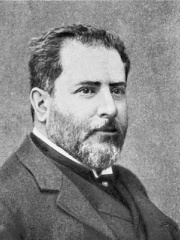
10. Leon Benois (1856 - 1928)
With an HPI of 55.17, Leon Benois is the 10th most famous Russian Architect. His biography has been translated into 15 different languages.
Leon or Leonty Nikolayevich Benois (Russian: Лео́нтий Никола́евич Бенуа́, romanized: Leonty Nikolayevich Benua; 23 August [O.S. 11 August] 1856 – 8 February 1928) was a Russian architect from the Benois family.
People
Pantheon has 18 people classified as Russian architects born between 1688 and 1914. Of these 18, none of them are still alive today. The most famous deceased Russian architects include Bruno Taut, Alexander Tamanian, and Lev Rudnev.
Deceased Russian Architects
Go to all RankingsBruno Taut
1880 - 1938
HPI: 70.06
Alexander Tamanian
1878 - 1936
HPI: 63.19
Lev Rudnev
1885 - 1956
HPI: 62.93
Konstantin Melnikov
1890 - 1974
HPI: 61.82
Konstantin Thon
1794 - 1881
HPI: 59.93
Joseph Bové
1784 - 1834
HPI: 58.71
Vasily Stasov
1769 - 1848
HPI: 56.72
Andrey Voronikhin
1759 - 1814
HPI: 56.00
Matvey Kazakov
1738 - 1812
HPI: 55.58
Leon Benois
1856 - 1928
HPI: 55.17
Vasily Bazhenov
1737 - 1799
HPI: 55.13
Nikolay Lvov
1753 - 1803
HPI: 54.82
Overlapping Lives
Which Architects were alive at the same time? This visualization shows the lifespans of the 17 most globally memorable Architects since 1700.

